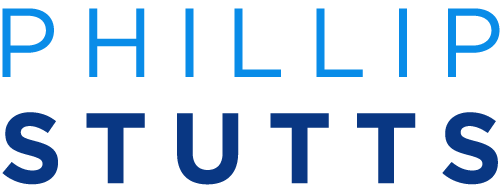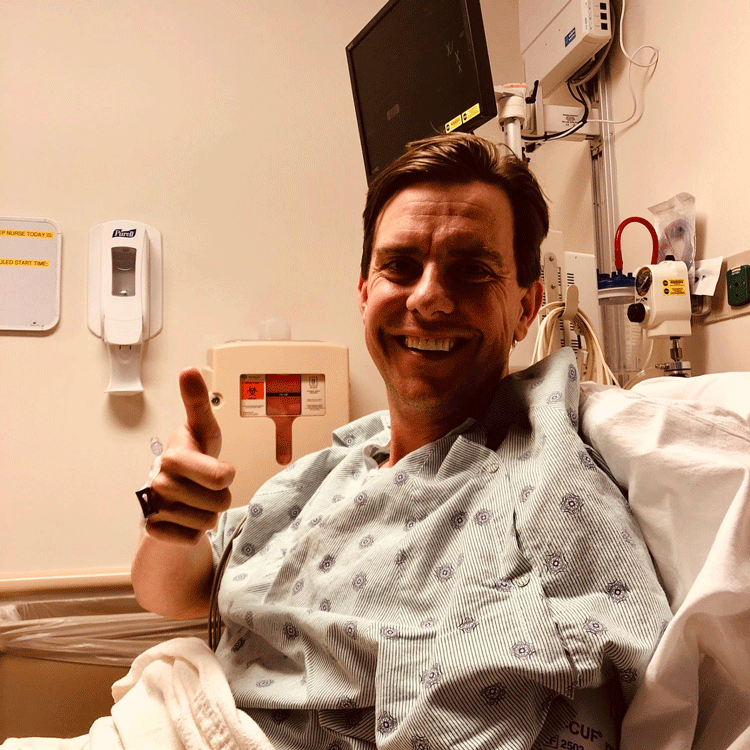“One way or the other, we made history …”
– Dr. Jay Pasricha, Johns Hopkins University School of Medicine
On Monday, February 17th, 2020, I walked into Johns Hopkins Hospital in Baltimore to undergo the first-ever, one-man clinical trial to treat my rare incurable esophageal disease, Achalasia.
Excitement, trepidation, anxiousness — this is how I felt when the nurses rolled me into the operating room for what is considered a “first-of-its-kind” procedure.
Three years ago, I penned an article in Inc. magazine (through Bill Carmody) declaring my moonshot and my mission to find a cure for my rare disease within five years. You can read that full article here, but to summarize:
The past five years I’ve been dealing with a rare esophageal disease called Achalasia. It affects one out of 100,000 and skews towards an older population. The odds are a bit more “exponential” when you consider I’m forty-two years old. There is no known cure. I’ve had three major surgeries on it to date, and I’m currently on a liquid diet for two meals a day. My doctors at the Mayo Clinic warn me that I am on a ten- to fifteen-year (at most) trajectory until I will have my esophagus removed, and thereby ingesting my meals through a feeding tube for the rest of my life.
No doubt, this diagnosis was a shock to the system. Time is not on my side, but I’m also a happy patient who knows this isn’t the end of the world, just a new challenge.
So I decided to disrupt my disease. My moonshot? I will be cured of Achalasia in five years. I will pursue and execute on my moonshot until I achieve it. It’s my massively transformative purpose.
Since the Inc. article, I’ve had a lot of ups and downs — from a failed biopsy to healthcare bureaucracy delays. Some doctors reached out to me expressing their opinion that this pursuit was a terrible idea. A few years ago, I even posted on an Achalasia Facebook page that I was taking this moonshot to find a cure — and was summarily ostracized — called a “fraud” for trying to give hope where there was only hopelessness. I stopped posting on support sites.
But there was a lot of positivity too — mainly from a few doctors that agreed whole-heartedly with the plan, advised me, and cheered my progress.
I decided to write about my moonshot on Medium, stay positive through the bumps in the road, and pursue finding a cure for the disease.
And it worked — eventually we received approval for this experimental first-time trial from the FDA and Johns Hopkins’s “Internal Review Board”.
We took our first real step last year when my medical team at Johns Hopkins biopsied my thigh muscle, withdrew skeletal stem cells, and grew them in a lab. (We actually did this twice. The first attempt failed. I had to return a few months later to do it again. The second biopsy was successful, however.) You can read about the process here.
With the stem cells fully cultured, I returned to Johns Hopkins to have them injected into my eroded and non-functioning esophageal muscle wall.
Our hope is that those stem cells will regrow the muscle and thus create functionality in the appendage.
The question I get most over the past three years is why did you choose this stem cell path? Although this esophageal procedure has never been attempted on humans or animals, it has been successful in treating urinary incontinence in animals.
My medical team’s more professional summation:
“Although the transplants are of skeletal muscle, and the native muscle in the esophagus is smooth muscle, we have previously shown in animal experiments, that the transplanted muscle is capable of integrating into the smooth muscle and responsive to neurotransmitters.”
And here is where the story gets completely crazy …
The surgeon inserted 225 million muscle-derived skeletal stem cells into 10 different targeted areas of my esophagus. My medical team deemed the procedure itself a success, due to zero post-surgical complications (infections, blockages, throat constrictions, etc.).
One week later, on February 24th, I traveled back to Johns Hopkins for a check-in and to get a better understanding of my short-term outlook. Here is what they told me:
Since this type of surgery/clinical trial has never occurred, we are flying blind, but the hope is that the stem cells take root around the 4-6 week mark and new muscle grows along the targeted locations in the esophageal wall. It is our hope that the stem cells continue to grow through the 12-week mark (when the muscle growth should peak).
The best metaphor I can think of is that it’s like planting a seed in a garden, knowing in a few weeks it will sprout and continue to grow until harvest.
In mid-May, I will return to Johns Hopkins to undergo a barrage of tests to examine and determine the effects of the surgery — did it even work, and where we go in the future.
I’ll probably know that answer before the tests …
Whether we make progress towards a cure or not, I do want to thank some amazing people who’ve been with me on my journey or just inspired me. They include: The entire Johns Hopkins and Cook MyoSite team, Annie and Parker, Peter Diamandis, Dr. Steven Gundry, Tony Atalla, Bill Carmody, Todd McAllister, Bob Hariri, Drew Pinsky, Neil Riordan, Dr. Bart Rademaker, Tony Robbins, Nancy Lazarus, and Oscar Renteria.
Finally, whether I find a cure, have improved functioning of the esophagus, or if this experiment ends up a complete failure, my life is blessed beyond words.
There was a time, less than four years ago actually, where I was so paralyzed by fear that I did nothing about this disease and my overall health. I outsourced it to some of the best doctors in the world — who told me there was nothing I could do, that I should just wait for the inevitable.
But one day the pain became so great, and I had to make a life-changing decision. Was my life going to be disrupted or was I going to be the disruptor? That’s what the moonshot is actually.
As I was leaving Johns Hopkins the other day, my doctor shook my hand, looked me in the eye and said, “One way or the other, we made history … but remember, we’re going to continue to take it one step at a time.”
One step at a time. I’m good with that.
Phillip
P.S. — In the model of the great Seth Godin, I only write these posts to share ideas and help fellow business owners. It’s a place to learn and grow without fear of being spammed or putting you in a sales funnel. I’m not doing that. If you’re a like-minded individual who might be interested in having these articles sent to you every two weeks, please email me (ps@phillipstutts.com) or sign up below:

